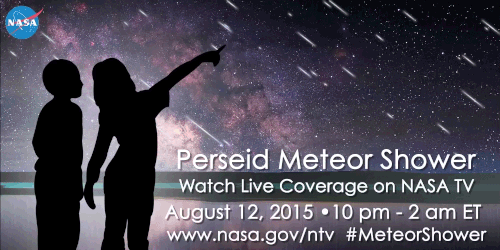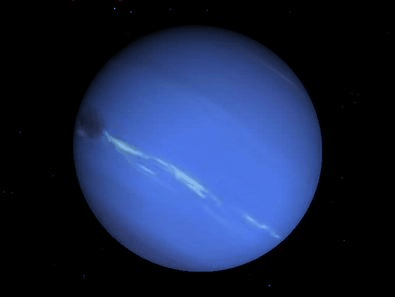Space Launch System
Space Launch System

Our Space Launch System (SLS) is an advanced launch vehicle for exploration beyond Earth’s orbit into deep space. SLS, the world’s most powerful rocket, will launch astronauts in our Orion spacecraft on missions to an asteroid and eventually to Mars!

A launch system required to carry humans faster and farther than ever before will need a powerful engine, aka the RS-25 engine. This engine makes a modern race car or jet engine look like a wind-up toy. With the ability to produce 512,000 pounds of trust, the RS-25 engine will produce 10% more thrust than the Saturn V rockets that launched astronauts on journeys to the moon!

Another consideration for using these engines for future spaceflight was that 16 of them already existed from the shuttle program. Using a high-performance engine that already existed gave us a considerable boost in developing its next rocket for space exploration.
Once ready, four RS-25 engines will power the core stage of our SLS into deep space and Mars.
More Posts from Space-m17-blog and Others

Annular Eclipse at Westwood, CA
js

Image of the galaxy NGC 5866

What are Perseid Meteors, and why should you be excited for them this year? Let us tell you!
The Perseid meteor shower is caused by debris from Comet Swift-Tuttle as it swings through the inner solar system and ejects a trail of dust and gravel along its orbit. When the Earth passes through the debris, specs of comet-stuff hit the atmosphere at 140,000 mph and disintegrate in flashes of light. Meteors from this comet are called Perseids because they seem to fly out of the constellation Perseus.

Last year, this meteor shower peaked during a bright “supermoon”, so visibility was reduced. Luckily, forecasters say the show could be especially awesome this year because the Moon is nearly new when the shower peaks on Aug. 12-13.
The best place to view the event is away from city lights around midnight. Under a clear, dark sky forecasters predict meteor rates as high as 100 per hour on peak night. So, get outside, look up and enjoy the show!
If your area has poor visibility on the peak night, we’ve got you covered! We’ll be hosting a live broadcast about the meteor shower from 10 p.m. EDT Wednesday, Aug. 12, to 2 a.m. Thursday, Aug. 13. In addition to footage from our live skycam, the program will highlight the science behind the Perseids, as well as our research related to meteors and comets. Tune in on NASA TV or our UStream Channel.


InSight Mission to Mars

Our InSight mission will place a fixed science outpost on Mars to study its deep interior. Findings and research from this project will address one of the most fundamental questions we have about planetary and solar system science – How in the world did these rocky planets form?
By investigating the interior structure and processes of Mars, the InSight mission will gain a better understanding of the evolutionary formation of planets, including Earth.
InSight will record Mars’ vital signs to learn more about the planet, including:

Seismic Activity:
A seismometer will be used to record the seismic activity on Mars. This will give us information on the crust, mantel and core; and the relationship between them.

Temperature:
A heat flow probe will be used to take Mars’ temperature and determine the change over the course of a full Martian year.

Reflexes:
By looking at how the rotation of Mars wobbles, we will better understand what the core size may be and its composition.

Launch for the InSight mission is scheduled for March 2016, and even though you can’t physically travel with the lander, you can send your name to the Red Planet onboard. Make sure to submit your name before Sept. 8!
Make sure to follow us on Tumblr for your regular dose of space: http://nasa.tumblr.com
Sea Level Rise

For thousands of years, sea level has remained relatively stable. But now, Earth’s seas are rising. Since the beginning of the 20th century, they have risen about eight inches, and more than two inches in the last 20 years alone!

As water warms, it expands and takes up more space. That means that when oceans warm, the sea level rises. This summer, we’ve been researching exactly how global warming has impacted Greenland’s ice sheet. Our ICESat-2 mission will use a laser to measure the height of the planet’s surface. Over time, we will be able to provide a record of elevation change, and estimate how much water has melted into the ocean from land ice change.
So how much ice are we actually losing? Great question, but the answer might shock you. In Greenland alone, 303 gigatons of ice was lost in 2014!

Since we know that ice is melting, we’re working to gain a better understanding of how much and how fast. We’re using everything from planes, probes and boats, to satellites and lasers to determine the impact of global warming on the Earth’s ice.

Follow along for updates and information: http://climate.nasa.gov/

Celestial Cypress by Paul Marcellini
js

Saturn and his moon Titan
By Sarah Knapton, Science Editor

Interstellar was right. Falling into a black hole is not the end, professor Stephen Hawking has claimed.
Although physicists had assumed that all matter must be destroyed by the huge gravitational forces of a black hole, Hawking told delegates in Sweden that it could escape and even pop into another dimension. The theory solves the ‘information paradox’ which has puzzled scientists for decades. While quantum mechanics says that nothing can ever be destroyed, general relativity says it must be.
However under Hawking’s new theory, anything that is sucked into a black hole is effectively trapped at the event horizon - the sphere surrounding the hole from which it was thought that nothing can escape. And he claims that anything which fell in could re-emerge back into our universe, or a parallel one, through Hawking radiation - protons which manage to escape from the black hole because of quantum fluctuations.
“If you feel you are in a black hole, don’t give up, there’s a way out,” Hawking told an audience held at the KTH Royal Institute of Technology in Stockholm In the film Interstellar, Cooper, played by Matthew McConaughey, plunges into the black hole Gargantura. As Cooper’s ship breaks apart in the force, he evacuates and ends up in a Tesseract – a four dimensional cube. He eventually makes it out of the black hole.
(excerpt - click the link for the complete article)
-
 sweetbutterbliss liked this · 2 years ago
sweetbutterbliss liked this · 2 years ago -
 alvaradodiegoblog-blog reblogged this · 7 years ago
alvaradodiegoblog-blog reblogged this · 7 years ago -
 awesomeman281 liked this · 7 years ago
awesomeman281 liked this · 7 years ago -
 thekid-1921 liked this · 8 years ago
thekid-1921 liked this · 8 years ago -
 minty-pity-kitty liked this · 8 years ago
minty-pity-kitty liked this · 8 years ago -
 seanieboy392 liked this · 8 years ago
seanieboy392 liked this · 8 years ago -
 badintellectual liked this · 8 years ago
badintellectual liked this · 8 years ago -
 zaurac reblogged this · 8 years ago
zaurac reblogged this · 8 years ago -
 conceptuala-blog liked this · 9 years ago
conceptuala-blog liked this · 9 years ago -
 bielote liked this · 9 years ago
bielote liked this · 9 years ago -
 aegistheia reblogged this · 9 years ago
aegistheia reblogged this · 9 years ago -
 pardonne-moi-blog reblogged this · 9 years ago
pardonne-moi-blog reblogged this · 9 years ago -
 playingjax reblogged this · 9 years ago
playingjax reblogged this · 9 years ago -
 fuadalanazi liked this · 9 years ago
fuadalanazi liked this · 9 years ago -
 twasthenightbeforelaunch reblogged this · 9 years ago
twasthenightbeforelaunch reblogged this · 9 years ago -
 astrovni-blog reblogged this · 9 years ago
astrovni-blog reblogged this · 9 years ago -
 science-it-forward reblogged this · 9 years ago
science-it-forward reblogged this · 9 years ago -
 axelsboredom reblogged this · 9 years ago
axelsboredom reblogged this · 9 years ago -
 axelsboredom liked this · 9 years ago
axelsboredom liked this · 9 years ago -
 emylisis reblogged this · 9 years ago
emylisis reblogged this · 9 years ago -
 ihavetogoghawaynow reblogged this · 9 years ago
ihavetogoghawaynow reblogged this · 9 years ago -
 dude-vader liked this · 9 years ago
dude-vader liked this · 9 years ago -
 lanas-own-blog reblogged this · 9 years ago
lanas-own-blog reblogged this · 9 years ago -
 strkid liked this · 9 years ago
strkid liked this · 9 years ago -
 illaine-waterhouse reblogged this · 9 years ago
illaine-waterhouse reblogged this · 9 years ago -
 imflyingcactus reblogged this · 9 years ago
imflyingcactus reblogged this · 9 years ago -
 bakota87-blog liked this · 9 years ago
bakota87-blog liked this · 9 years ago -
 jderektumbls liked this · 9 years ago
jderektumbls liked this · 9 years ago -
 deaku liked this · 9 years ago
deaku liked this · 9 years ago -
 tilerin reblogged this · 9 years ago
tilerin reblogged this · 9 years ago -
 tilerin liked this · 9 years ago
tilerin liked this · 9 years ago -
 blissthisway liked this · 9 years ago
blissthisway liked this · 9 years ago -
 theamazingsallyhogan reblogged this · 9 years ago
theamazingsallyhogan reblogged this · 9 years ago -
 theamazingsallyhogan liked this · 9 years ago
theamazingsallyhogan liked this · 9 years ago -
 heckfire reblogged this · 9 years ago
heckfire reblogged this · 9 years ago -
 jasoncanty01 reblogged this · 9 years ago
jasoncanty01 reblogged this · 9 years ago -
 jasoncanty01 liked this · 9 years ago
jasoncanty01 liked this · 9 years ago -
 quakeponi reblogged this · 9 years ago
quakeponi reblogged this · 9 years ago -
 starsaremymuse reblogged this · 9 years ago
starsaremymuse reblogged this · 9 years ago -
 praisethesunbrah reblogged this · 9 years ago
praisethesunbrah reblogged this · 9 years ago -
 praisethesunbrah liked this · 9 years ago
praisethesunbrah liked this · 9 years ago
I love space. I've been to space camp in Huntsville Alabama and I am planning on going every summer. I look forward to be an astronaut for nasa on the sls that is planned to be launched 2018. And the manned mission 2030. So yeah I won't let anything get in my way.
138 posts